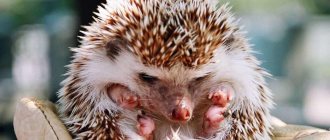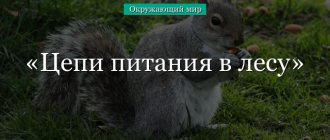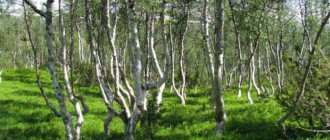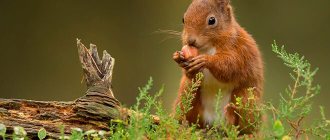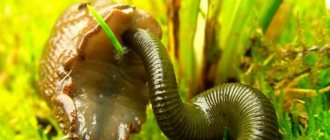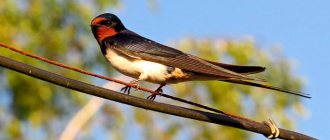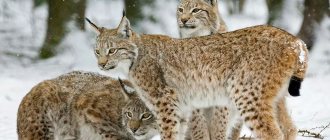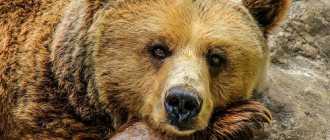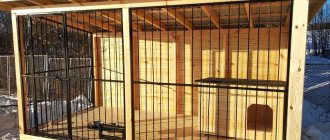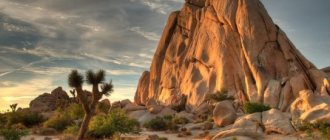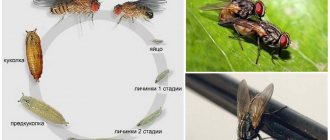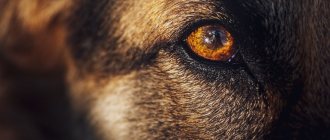Most living organisms eat organic food, this is the specificity of their life activity on our planet. Among this food are plants, the meat of other animals, their products and dead matter ready for decomposition. The process of nutrition itself occurs differently in different species of plants and animals, but so-called food chains are always formed. They transform matter and energy, and nutrients can thus pass from one creature to another, carrying out the cycle of substances in nature.
Producers and consumers
- The first are autotrophic organisms that feed on inorganic food. They take energy and matter to create their own bodies, using gases and salts from their environment. An example is green plants that get their food from sunlight through photosynthesis. Or numerous types of microorganisms that live everywhere: in the air, in the soil, in the water. It is the producers who, for the most part, constitute the first link in almost any food chain in the forest (examples will be given below).
- The second are heterotrophic organisms that feed on organic matter. Among them are those of the first order that directly provide nutrition through plants and bacteria, producers. Second order - those who eat animal food (predators or carnivores).
Herbivores
Animals that feed on plant foods are found in abundance in various forests. Of course, the tropical forest, for example, is very different in its content from the lands of the middle zone. The jungle is home to various species of animals, many of which are herbivores, which means they form the second link in the food chain, feeding on plant foods. From elephants and rhinoceroses to barely visible insects, from amphibians and birds to mammals. So, in Brazil, for example, there are more than 700 species of butterflies, almost all of them are herbivorous.
The fauna, of course, is poorer in the forest belt of central Russia. Accordingly, there are much fewer food chain options in a mixed forest. Squirrels and hares, other rodents, deer and moose, hares - this is the basis for such chains.
Species structure of biocenosis
The species structure of the biocenosis is characterized by the following main indicators:
– The abundance of a species in a community, which is represented by the number of individuals of one species per unit of occupied space.
– Consistency – represents the percentage of the number of samples where a given species occurs to the total number of samples or survey sites. A species can be both abundant (in individual areas) and rare (community-wide).
– Probability – is expressed by the degree of attachment of the species to the biocenosis.
– Dominance – represents the ability of a species to occupy a dominant position in a community in terms of the number of its individuals, biomass or rate of production of organic matter.
Predators or carnivores
They are called that because they eat flesh, feeding on the meat of other animals. They occupy a dominant position in the food chain, often being the final link.
In our forests these are foxes and wolves, owls and eagles, sometimes bears (but in general they are omnivores that can eat both plant and animal foods). A food chain can involve either one or several predators that eat each other. The final link, as a rule, is the largest and most powerful carnivore. In the middle forest, this role can be performed, for example, by a wolf. There are not too many such predators, and their population is limited by the nutritional base and energy reserves. Since, according to the law of conservation of energy, during the transition of nutrients from one link to the next, up to 90% of the resource can be lost. This is probably why the number of links in most food chains cannot exceed five.
Scavengers
They feed on the remains of other organisms. Oddly enough, there are also quite a lot of them in the natural forest: from microorganisms and insects to birds and mammals. Many beetles, for example, use the corpses of other insects and even vertebrates as food. And bacteria are capable of decomposing the dead bodies of mammals in a fairly short time. Scavenger organisms play a huge role in nature. They destroy matter, converting it into inorganic substances, releasing energy, using it for their life activity. If it were not for scavengers, then, probably, the entire earthly space would be covered with the bodies of animals and plants that have died throughout time.
Decomposition model
A large mass of floristic representatives of broad-leaved, coniferous and mixed forest belts is not suitable for food by mammals, and therefore dies off in the ground. Detritus forms in the soil of the steppe, in the water column and at the bottom of taiga rivers and lakes. Small particles of mineralized organic matter, which are the remains of dead animals and plants, are part of the food chain pattern characteristic of the taiga.
Dead material is temporarily removed from the natural cycle of nutrients. The absence time can be a short period, since animal carcasses and waste in a warm forest climate are processed within a few days, for example, by fly larvae. Grass and leaves transform in 3-5 months, the decomposition time of dead tree trunks corresponds to several years.
Examples of food chains in the forest
To create a food chain in a forest, you need to know about the inhabitants who live there. And also about what these animals can eat.
iv>
- Birch bark – insect larvae – small birds – birds of prey.
- Fallen leaves are bacteria.
- Butterfly caterpillar – mouse – snake – hedgehog – fox.
- Acorn - mouse - fox.
- Cereals – mouse – eagle owl.
There is also something more authentic: fallen leaves – bacteria – earthworms – mice – mole – hedgehog – fox – wolf. But, as a rule, the number of links is no more than five. The food chain in a spruce forest is slightly different from those in a deciduous forest.
- Cereal seeds – sparrow – wild cat.
- Flowers (nectar) – butterfly – frog – snake.
- Fir cone – woodpecker – eagle.
Food chains can sometimes intertwine with each other, forming more complex, multi-level structures that unite into a single forest ecosystem. For example, the fox does not disdain to eat both insects and their larvae, and mammals, thus several food chains intersect.
Source: fb.ru
Closed forest food chain
Unlike a coniferous forest, where trees typically do not lose their leaves every year, a deciduous forest is characterized by a predominance of flowering trees, shrubs and shrubs, most of which lose their leaves as the weather gets colder and the daylight period becomes shorter. Such trees and plants enter a state of dormancy during the winter, an adaptation designed to preserve life when energy sources decrease.
Solar energy - the beginning
The food chain in the deciduous forest includes
- «
- "decomposing".
At the beginning of the chain is the sun , which turns plants into producers. When solar energy in the form of light and heat strikes the surface of a plant leaf, a photosensitive molecule called chlorophyll stimulates a process called photosynthesis, a series of chemical reactions that convert the sun's energy into sugar molecules. These molecules store energy that will be used later by the plant and, ultimately, by those organisms that use the plant for food. Some of this energy goes into the production of seeds, which carry the genetic code for the further development of the species.
Another result of photosynthesis is the production of oxygen and the absorption of carbon in the form of carbon dioxide gas.
Manufacturers
Food producers in a deciduous forest are trees and plants that convert sunlight into mass and stored energy.
> and plants subsequently become the main source of food for consumers above them in the food chain: for example, insects, birds, rodents and deer eat leaves and other parts of plants, taking the stored energy as food. However, symbiosis also occurs, in which organisms of different species act within a kind of cooperative arrangement, such as when bees pollinate plants when they collect nectar. In addition, bacteria in the soil break down nutrients into a form that is easily used by plant root systems.
Consumers
In the deciduous forest food chain, the inhabitants are organisms that cannot produce their own food and must eat other organisms to survive. Consumers may be of primary, secondary or tertiary type. Primary consumers include insects, rodents and large herbivores, which eat mainly plants, herbs, seeds and berries.
Secondary consumers include birds of prey , such as owls and hawks, as well as other small predators such as foxes and skunks, which eat insects and rodents and other animals. Tertiary consumers, said to be at the "top" of the animal food chain, are predators that prey on small animals below them in the food chain.
Decomposers or decomposers
All living things have a lifespan and without a way to dispose of dead organisms, the ecosystem will soon be filled with the remains of plant and animal life. Decomposers break down such remains, turning them into smaller and smaller pieces that eventually become new soil. Bacteria and insects perform this function, as do fungi and some large scavengers. The resulting nutrient-rich soil is ideal for seed growth, beginning the cycle of life.
Consumers are divided into:
- Primary
- Secondary
- Large secondary
Primary consumers are mainly small animals. The forest provides food, cover in mosses, moderate temperatures and humidity, which encourages the growth of many types of insects. This is a mosquito paradise! As well as insects, there are small mammals: voles (tiny mammals like mice), chipmunks, squirrels and seed-eating birds. They feed on seeds, grasses and even mushrooms. Large animals such as deer and elk also find food in this biome.
An interesting primary consumer is salmon. These fish hatch from eggs in cold mountain streams and eat tiny aquatic organisms and insects that fall into the water. Young fish swim down the river to the ocean, where they grow to maturity. When they are fully grown, the larger fish return from the ocean and swim upstream to lay their eggs. The parents then die, and their bodies provide food for all the meat-eaters in the area.
Secondary consumers are also located at home in the forest area. Tiny shrews eat insects, and frogs capture insects as they fly. There are many insect-dwelling birds, some of which, like the woodpecker, are adapted to finding insects in trees. Ducks eat small animals, and raccoons eat animals, fish, frogs and fruit. Owls eat voles and chipmunks. Insects live as parasites on other animals.
Large secondary consumers , such as wolves, bears and cougars, are the only ones that can overpower a deer or elk. However, once they have made a kill, small predators may move on to get a share. Large carnivores sometimes also eat smaller ones.
There are other animals in this food web such as foxes, beavers, blackbirds and porcupines. Because plants do it well, animals thrive too.
Source: zveri.guru
Conclusion
The food chain maintains the well-being of the ecosystem in which it is found. It ensures population control and contributes to the normal balance of substances in nature.
Each link (level) of the chain is very important, because when it disappears, the chain “opens” and all participants become at risk. Smaller units will multiply uncontrollably, and larger ones will die out due to lack of food. That's why it's so important to monitor the ecology of the forest and endangered animals!
It’s the beginning of September, I’m on my way to the taiga for the base winter quarters, I turn off the main road, drive about a kilometer and stop. Ahead, right in the middle of the road, lies a huge elk. The first thing that came to mind was that he was overrun by poachers. I’m not in a hurry to get out of the cabin, I looked around - there was no one, there were no tire tracks on the road either. He took the carbine, opened the door and went out into the street, slowly walked up to the elk and looked around. The trees that grew along the road were bent and some were broken, the bark on the trunks was torn up, the remains of the bark stuck to the horns of the bull like shavings. Was it possible that his opponent was beaten to death during the race? I began to look into the traces. The road was rocky and there were no footprints on it, but just furrows and upturned stones. At the edge of the road I notice bear tracks mixed with elk tracks. I make a circle of larger diameter and find a bear’s bed under a large spruce tree on a steep, steep slope. Now the picture began to emerge as follows: A trail of elk passed by this slope, from the old clearings to the river to a watering hole, and the bear set up an ambush. Judging by the bed and the tracks around, he waited for more than one day and, having waited for his victim, jumped from the ledge onto the elk’s neck and began to break it. The bull was at the peak of his strength and put up stiff resistance. Trying to throw off the predator, the elk jumped out onto the road and tried to throw it off the roadside trees. But since the bear was in a more advantageous position, victory was on his side, the elk fell with a broken neck, the bear also received serious wounds, and he had to move away from the victim to the river and lie down. It was at this time that I arrived.
I drove a UAZ over a moose, tied it by the legs and dragged it a couple of kilometers to the place where I had set up a bait area for bears. Naturally, I couldn’t deliver such a carcass to the place; I had to abandon it on the road not far from the bait. I decided that day not to spend the night in the winter hut, but to go back, thereby giving the bear the opportunity to approach its prey.
Having returned home, I called a friend and offered to take part in a bear hunt, he was not against it and a day later we moved to the feeding area. They left the car at the winter hut, did not unload it, so as not to make too much noise, but took the carbines and went to the bait. I was moving ahead of my friend about thirty meters, which, in my opinion, is a sufficient distance to react correctly in the event of a sudden attack by a bear. He also warned him that he would look at my signs, which I would silently give with my hand. Not reaching about eighty meters, we saw fresh tracks of a large bear with its excrement. The place where the moose was left was hidden behind a small bend. Clinging to the side of the road and trying not to make noise, I prepared for battle, all my attention forward. I look around the bend and see a huge black bear sitting on the carcass of an elk, already quite buried, and looking at me without looking away. I press myself against the nearest spruce, aim at the head and shoot - it suddenly falls on its front paws and freezes. After sitting for a few more minutes, they slowly approached, the bear did not move, and not much blood flowed out of the hole on its head. Inspecting the trophy, they decided to turn it over, but as soon as they took hold of its hind legs and pulled, the bear began to jerk its legs and began to breathe deeply. A control shot at the base of the skull ended the hunt.
What are food chains like?
There are two types: pasture and detrital. The first ones are more common in nature. In such chains, the first link is always the producers (plants). They are followed by consumers of the first order - herbivores. Next are second-order consumers—small predators. Behind them are consumers of the third order - large predators. Further, there may also be fourth-order consumers, such long food chains are usually found in the oceans. The last link is the decomposers.
The second type of food chain -
detrital - is more common in forests and savannas.
They arise due to the fact that most of the plant energy is not consumed by herbivores, but dies, then undergoing decomposition by decomposers and mineralization. Food chains of this type begin from detritus - organic remains of plant and animal origin. The first-order consumers in such food chains are insects, for example, dung beetles, or scavenger animals, for example, hyenas, wolves, vultures. In addition, bacteria that feed on plant residues can be first-order consumers in such chains.
In biogeocenoses, everything is connected in such a way that most species of living organisms can become participants in both types of food chains .
General concept
A food chain is a logical order of interaction between organisms, in which each previous biont provides food for the next. There is a transfer of energy from the initial source through a chain of organisms. Living beings communicate with each other because they provide food for other individuals.
Food thread usually includes 3-5 links. Each new species acquires approximately 10% of the energy from the previous element in the chain. About 90% of bioenergy is converted into heat.
Sequence of links
If an individual ceases to exist, the organism becomes a nutritional resource for animals that consume carrion. The remains after eating pass on to decomposers, which are represented by a class of fungi and bacteria. These components contribute to the final decomposition.
Food chains in deciduous and mixed forests
Deciduous forests are mostly found in the Northern Hemisphere of the planet. They are found in Western and Central Europe, in Southern Scandinavia, the Urals, Western Siberia, Eastern Asia, and Northern Florida.
Deciduous forests are divided into broad-leaved and small-leaved. The former are characterized by trees such as oak, linden, ash, maple, and elm. For the second - birch, alder, aspen .
Mixed forests are those in which both coniferous and deciduous trees grow. Mixed forests are characteristic of the temperate climate zone. They are found in southern Scandinavia, the Caucasus, the Carpathians, the Far East, Siberia, California, the Appalachians, and the Great Lakes.
Mixed forests consist of trees such as spruce, pine, oak, linden, maple, elm, apple, fir, beech, and hornbeam.
Pasture food chains are very common in deciduous and mixed forests . The first link in the food chain in forests is usually numerous types of herbs and berries, such as raspberries, blueberries, and strawberries. elderberry, tree bark, nuts, cones.
First-order consumers will most often be herbivores such as roe deer, moose, deer, rodents, for example, squirrels, mice, shrews, and hares.
Second-order consumers are predators. Usually these are fox, wolf, weasel, ermine, lynx, owl and others. A striking example of the fact that the same species participates in both grazing and detrital food chains is the wolf: it can both hunt small mammals and eat carrion.
Second-order consumers can themselves become prey for larger predators, especially birds: for example, small owls can be eaten by hawks.
The final link will be decomposers (rotting bacteria).
Examples of food chains in a deciduous-coniferous forest:
- birch bark - hare - wolf - decomposers;
- wood - chafer larva - woodpecker - hawk - decomposers;
- leaf litter (detritus) - worms - shrews - owl - decomposers.
Spatial structure of the biocenosis
Determining the spatial structure of a biocenosis is carried out by dividing it into internal interconnected parts and clarifying the nature of their connections and the degree of dependence on each other and on external environmental conditions. The spatial structure of the forest biocenosis consists of its vertical and horizontal structures. The vertical structure of the biocenosis is formed by individual elements, special layers, which are usually called tiers. A layer consists of several plant species growing together, differing in height and position in the biocenosis of assimilating organs.
Different ones are formed by different life forms. As a rule, in forest biocenoses the first tree layer is formed by tall trees that have high-lying foliage and good sunlight. Sunlight that is not used by the first tier can be used by the second (subcanopy) tier, which consists of smaller trees. The remaining ten percent of sunlight is absorbed by the understory layer. It consists of shrubs and shrubby forms of tree species such as mountain ash, willow, forest apple and others.
A very small part of solar radiation (ranging from one to one and a half percent) is used by grass plants that form the grass-shrub layer. These plants include: lily of the valley, wood sorrel, strawberries, lingonberries, blueberries, ferns. The surface layer of mosses and lichens is formed by the moss-lichen layer. It is worth noting that the number of tiers may vary; there may be fewer or more of them. The tiers usually do not include lianas, epiphytes, and parasitic plants, which are classified as extra-tiered vegetation, since it is very difficult to unambiguously assign them to any specific tier.
Features of food chains in coniferous forests
Such forests are located in northern Eurasia and North America. They consist of trees such as pine, spruce, fir, cedar, larch and others.
Here everything is significantly different from mixed and deciduous forests .
The first link in this case will not be grass, but moss, shrubs or lichens. This is due to the fact that in coniferous forests there is not enough light for a dense grass cover to exist.
Accordingly, the animals that will become consumers of the first order will be different - they should feed not on grass, but on moss, lichens or shrubs. This could be some species of deer .
Although shrubs and mosses are more common, herbaceous plants and shrubs are still found in coniferous forests. These are nettle, celandine, strawberry, elderberry. Hares, moose, and squirrels usually eat this kind of food, which can also become consumers of the first order.
Second-order consumers will be, as in mixed forests, predators. These are mink, bear, wolverine, lynx and others.
Small predators such as mink can become prey for third-order consumers .
The closing link will be rotting microorganisms.
In addition, detrital food chains . Here the first link will most often be plant humus, which feeds soil bacteria, becoming, in turn, food for single-celled animals that are eaten by mushrooms. Such chains are usually long and can consist of more than five links.
Source: lapku.ru
